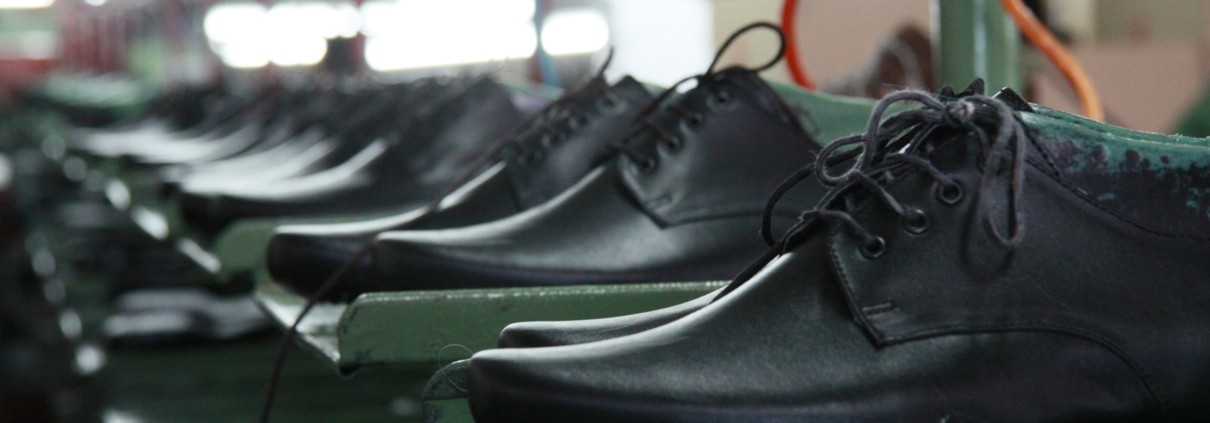The story of Amrita – India
Amrita is a 50-year-old widow who works in a shoe factory in Ambur, a city in the Indian state of Tamil Nadu. The Corona pandemic has had a dramatic impact on Amrita’s life. When her workplace closed, Amrita lost out on her wages. She and her family suffered from hunger and she got herself into debt. Since the factory reopened, Amrita has had to work longer hours for less wages.
Single earner
As a single earner, Amrita takes care of a son and a daughter. Amrita lives with her son; her daughter is studying to become a nurse. When the Indian government proclaimed the lockdown in March 2020, Amrita’s daughter was doing an internship away from home. With the sudden lockdown, her internship was abruptly called off, and with the transport system not operating, she could not come back home. Amrita had to pay for her daughter’s accommodation in a hostel, expenses that were way above her budget.
Amrita lives in a modest rental house in Ambur. When Amrita’s wages were cut, she still had to pay full rent. The family received a one-time payment of 1,000 rupees as emergency relief from the state government, which was welcome but far from enough to make up for the financial hardship they faced.
The lockdown and the financial stress were also felt in other ways. The marriage of Amrita’s son had to be postponed. Big gatherings were not allowed during the lockdown and the marriage was not financially feasible either. In the same period, the family could not attend the funeral of a relative, as there was no way to reach the ceremony location.
Amrita’s factory
The factory where Amrita is working produces uppers for women shoes. Amrita’s job is fusing, putting together the leather parts. This factory is part of a big privately-owned group, which owns several companies. The group produces shoes for men and women as well as finished leather, both for the domestic market and for export destinations.
Massive lay-offs
When Amrita’s factory reopened in late May 2020, Amrita could resume her job. Many co-workers, however, were not called back. Of the 1,500 people working in her factory almost half of the workers were laid off after the lockdown was lifted. Before the Corona crisis the factory had 15 production lines; now only six or seven lines were kept running. Temporary workers and helpers were most affected; they were dismissed first. The factory management told the workers that the dismissals were the result of a reduced number of orders and that the factory would make losses if the entire workforce was kept on. Dismissed workers did get a sum of money as compensation, the amount depending on the time they had worked for the factory, but definitely not enough to make up for the loss of employment.
Health and safety measures
One point that Amrita was positive about were the health and safety measures that were introduced by management in the factory. She mentioned the screening of workers’ temperatures and the provision of sanitizer at the compound’s entrance. Workers are instructed to wear masks, and keep a safe distance from each other. Inside the factory, however, no additional facilities for washing hands have been installed.
More work, less pay
During lockdown, as well as since Amrita started working again, she has not received even a third of her normal salary and no festival bonuses. She said that she had no hopes to ever receive her back wages. After the factory reopened, management introduced a new workplan: Amrita now has to work nine hours every day, instead of the eight hours she used to work. This is six hours of extra work per week. The pay, however, is significantly less than before the lockdown. Instead of 7,000 INR (a mere 79 EUR) per month, Amrita now only gets 6,500 INR (73.4 EUR). Overtime hours are not paid at the proper rate. Amrita does not have an employment contract, so she cannot take formal legal action to address this.
Corona in India
The India garment and footwear sector has been badly affected by the Corona pandemic. Early 2020, the import of key inputs like chemicals, adhesives, dyes and footwear components such as soles, buttons and zippers was severely interrupted, which badly impacted production capacity in the various leather hubs in India. The lockdowns in the US and the EU in the first quarter of 2020, including closure of retail shops, further disturbed production the sector, as it brought the demand for leather products to an immediate halt. As a result, many factories and workplaces in India closed. Late March 2020, the Government of Indian called for the first domestic lockdown, causing further havoc to India economy. In April 2021, a new wave of the Covid pandemic hit the country, forcing the country again into regional lockdown. Only since early June 2021, with case numbers declining, Indian states started easing lockdowns.


